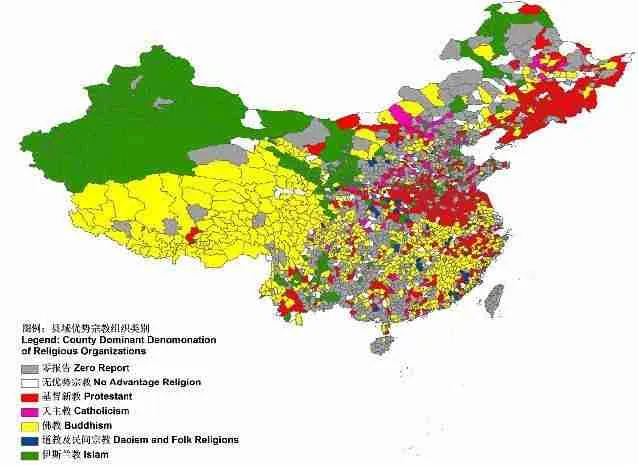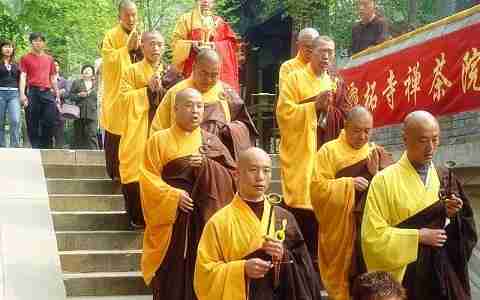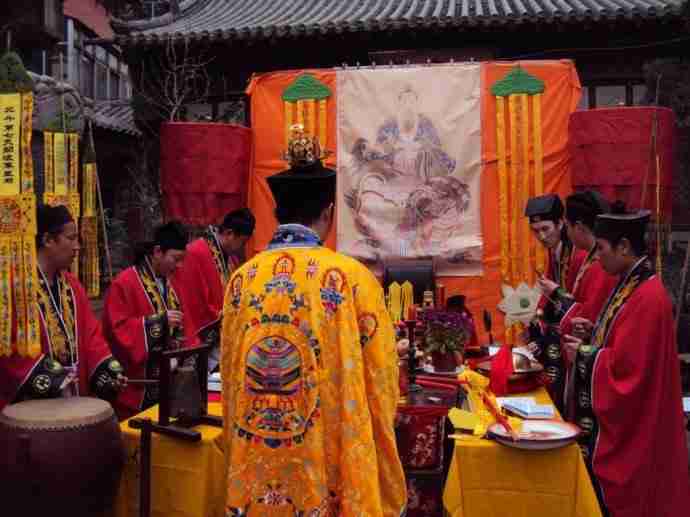China considers itself an atheist state, but this doesn’t mean that the Chinese people are atheists. Interestingly, China appears to have the highest number of deeply religious people in the world. These religious groups are all different from each other, but they all make China one of the most culturally diverse nations in the world. Below, we’ll share China’s most popular religions.
What Is China’s Most Popular Religion?

The most popular and common religions in China are Chinese Folklore, Buddhism, Taoism, and Confucianism. These are the popular religions, but not the only religions in China.
There are Abrahamic religions practiced in China as well, for example, the Kaifeng Jewish community that lives in China.
Islam has also been shown to be a historically popular religion in China, as it was introduced in the country during the reign of the Tang Dynasty. Also, the Hui and the Urghur people of China are Muslims.
Today, Chinese societies consider Buddhism, Taoism, and Confucianism to be the three main pillars of their societies. This is primarily because these religions are not influenced by just spirituality but also by science, government, arts, as well as social structure. This isn’t to say that these beliefs are always streamlined because there are cases where these beliefs clash and are at odds with each other. There is also a lot of overlaps among these religions.
Buddhism and Folk Religions

China boasts the world’s largest population of people that belong to the Buddhist religion. It’s estimated that as many as 185 – 250 million Chinese are Buddhist practitioners, this is according to statistics by the Freedom House.
So, although Buddhism originated from India, this religion has a rather long history in China today, with most of the Buddhist traditions practiced in China. As a result, Buddhism also makes up the largest form of the country’s institutionalized religion.
Speaking of Buddhism, you should know that there are three main branches of Buddhism that exist in China today. These include Han Buddhism, Theravada, and Tibetan Buddhism. Theravada falls under and comes from the Hindu Religion, while the Tibetan and Han Buddhism are from China, Mahayana, to be specific.
Folk Religions

Research by the Pew Research Center from 2012 reported that at least 294 million Chinese people, translating to 21% of the country’s population, practiced what is known as the folk religion. It’s been shown that the Chinese folk religions do not have any rigid organizational structure, and the folk religions practice what appears to be a blend of Taoism and Buddhism. The folk religions are considered a manifestation of the kind of worship associated with spirits, the ancestors, and many other select local deities. And despite many of the traditional Chinese religious believers or adherents that make it almost impossible to measure the actual number of people who follow this religion, it’s clear that the building of new temples, as well as the restoration of the old temples, show that while most people believe in the folk religions, there is a growth in both the Buddhist and the folk religious beliefs across China. Reports show that there are hundreds, if not thousands, of folk religious temples across China. Though these temples haven’t been registered by the SARA, they are largely tolerated. Besides Buddhism and the Chinese Folk religions, the large number of temples is also associated with Taoism.
The tolerance to the high number of temples has to do with the opening of China in the 1980s, along with the reforms made in the same years, all resulting in more tolerance and even tactical approval of temples, hence the rise in the practice of Buddhism.
Today, the growth of Buddhism, for example, can be attributed to the heightening of the visibility of some of the Buddhist institutions, especially the philanthropic organizations which deliver necessary social services to the poor, even as the levels of inequality soar across China.
Xi coming to power is also the reason for the rise in Buddhist and other religious groups, and experts note that the apparent easing of most of the tough rhetoric held against the traditional Chinese beliefs is the reason for the rise in Buddhism and other religious beliefs. As a result, beliefs like Confucianism, Daoism, and Buddhism are believed to be rather helpful, especially in curbing the country’s high rate of moral decline.
Note that the Chinese folk religions are made up of a combination of religious practices that include ancestral veneration, Confucianism, Taoism, and Buddhism. It’s believed that the folk religions trace their origins from the Neolithic ancestral beliefs, including the veneration of the Earth, Moon, Sun, Heaven, as well as some Stars, and even communication with specific animals.
Tibetan Buddhism

This is a common religious practice associated with Tibetans, specifically, the Tibet Autonomous Region along with the region’s adjacent provinces. It is home to at least 6 million ethnic Tibetans. This class of Buddhism is distinct, and it is associated with the Dalai Lama, who is the spiritual leader for the main schools of Tibetan Buddhism.
Notably, Buddhism is the 3rd largest main belief system originating from Ancient China. Buddhism was founded by Buddha, also known as Siddhartha Gautama, and he lived in India in the 6th Century BCE.
Buddhism is a religious philosophy that focuses on personal development, as well as the attainment of deep knowledge. These are attained through spiritual learning, meditation, and practice.
Confucianism

Though Confucianism is a lot closer to philosophy than it is to true religion, it’s had a great influence on Chinese cultures today. Confucianism’s beliefs focus on humanism and how it is important to treat others as you’d like to be treated; it also focused on the importance of every person fulfilling the obligations they had been given. It didn’t focus on things like goddesses and gods or even mysticism.
Taoism

Also known as Daoism, Taoism is a Chinese religious belief that was developed after Confucianism. But unlike Confucianism, Taoism is more focused on the spiritual elements that Confucianism ignored. It also lays focuses on the importance of the nature of the universe. The guiding principle in Taoism is something called The Way, an element that relates to the harmonious state of natural order arising between human beings and the universe/ world. Taoism also focuses on Non-Action, meaning that people are to live by the true nature of the world as it is rather than strive hard to achieve their desires.
Finally, it’s worth noting that Christianity has also proliferated in China, and since the 1980s, there has been an increase in the growth of Protestantism as one of China’s fastest-growing religious groups.